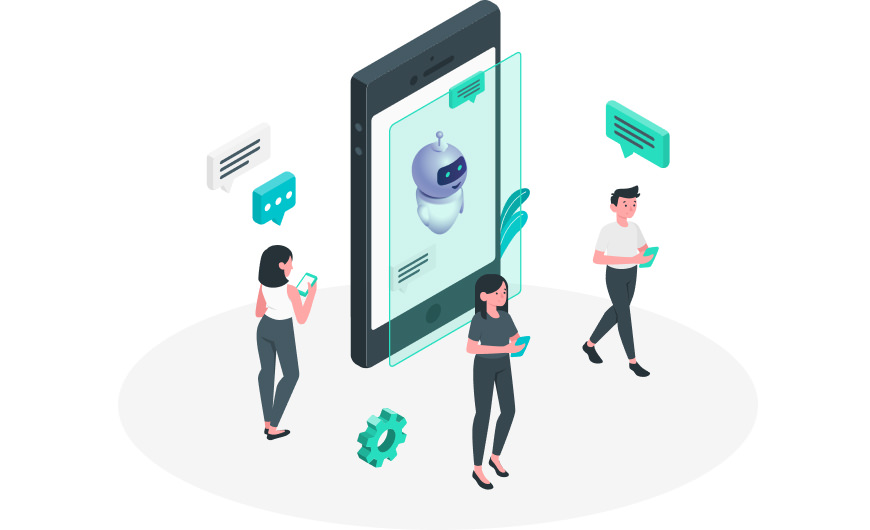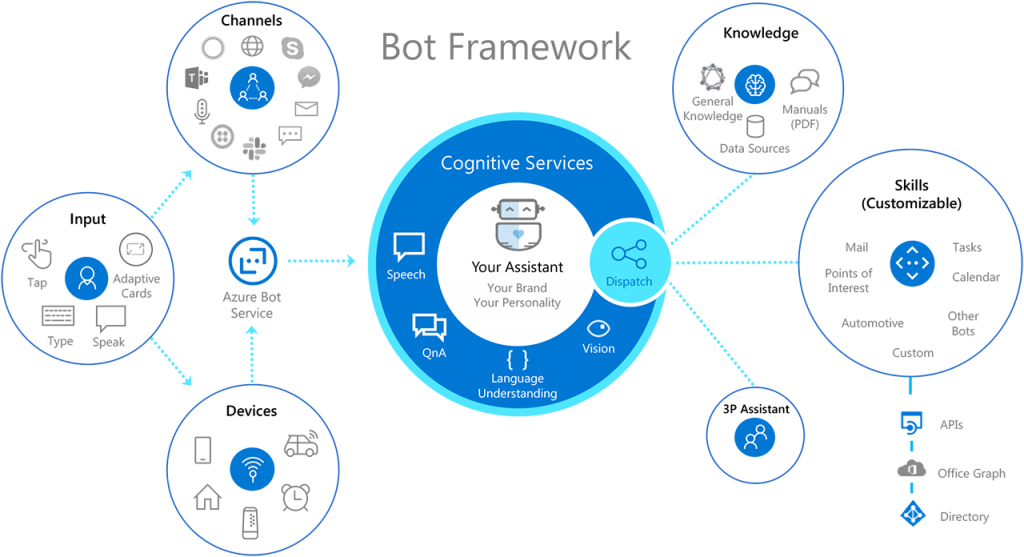
There is a lot of misinformation and many misconceptions about what chatbots are, what they can do, and how they benefit both the business and site users. This post sets the record straight on the relevant issues concerning chatbots from a business point of view. Read on and learn how this technology in communication is more than just your typical messaging application.
Chatbots are quickly becoming essential features of modern websites. According to Grand View Research, the global chatbot market is expected to reach USD 1.25 billion by 2025. A recent report put together by Drift, SurveyMonkey, and other collaborators also highlights the increased use and versatility of chatbots in businesses. The report sites that internet users and businesses use chatbots to improve communication efficiency, especially in exchanging quick responses. This means that more and more businesses continue to integrate chatbots with their websites and other online platforms.
What is a chatbot?

Basically, a chatbot is any computer application that can simulate or mimic conversations with humans. Chatbots are very popular on modern websites, and they often take the form of a messaging app. They are often mistaken for live chat applications, and a good number of users conversing with chatbots assume they're engaging with an actual person. You may also be using chatbots regularly without realizing it; the technology is so refined that it takes a keen eye to distinguish between live humans and bots.
There are many different types of chatbots. You can have social media chatbots, user support chatbots, voice-activated chatbots, and even others that are more like virtual assistants. However, they all fall into two basic categories:
Pre-Programmed chatbots
These are simple chatbots with predefined responses to queries. They follow the rules embedded in their programming to interpret and respond to input. For instance, the programmer may use keyword recognition techniques to pick up on the context of conversations and display predetermined strings of text as responses. These types of chatbots have a very limited conversation scope and are only used to answer simple queries, display CTAs, and guide users around the site.
Intelligent chatbots

Intelligent chatbots are a lot more robust and versatile. Instead of offering predetermined answers, they instead learn to respond in a more "natural" way. Such chatbots are equipped with sophisticated artificial intelligence and machine learning algorithms that can determine the context of the conversation through natural language analysis and adapt their responses accordingly. An intelligent chatbot will continually store conversational data (mostly on the Cloud) and learn from it, thus making itself smarter and more human-like.
How do chatbots fit into business objectives?

Why have chatbots suddenly become such a big deal? What do businesses stand to gain from implementing chatbots on their e-commerce platforms? Well, as it turns out, quite a lot. Here is a look at some of the most attractive benefits of using chatbots in a business setting.
Enhance customer experience
It's safe to say that in this day and age, a majority of retail shopping takes place online. A global survey conducted not that long ago revealed that 83 percent of online shoppers needed support or some form of assistance during shopping. Customer support is all about communication, and a chatbot provides a reliable channel for relaying valuable guidance and tending to customers’ needs.
Providing customers with a helping hand to guide them on their shopping journey drastically reduces bounce rates and cart abandonment. Plus, it reassures customers, which leads to customer satisfaction and improves the overall user experience. Some intelligent chatbots can even personalize the shopping experience for each individual.
Save on HR costs
Consider chatbots as a modern alternative to live human customer support. Chatbots guarantee 24/7 service availability and can engage with several customers simultaneously. To get that kind of versatility and functionality from a customer support team, you'd need a virtually limitless number of human agents. Although chatbots usually work alongside human counterparts, they drastically reduce the amount of human effort required.
This saves on the cost of hiring customer support representatives and acquiring the resources needed to enable them. Automation reduces redundancies in HR and minimizes operational costs.
Assist in marketing strategies
High-end intelligent chatbots collect and analyze conversational data and customer information to derive valuable insights and patterns. This information can then be used to inform business decisions and marketing strategies. Modern businesses thrive on the availability of data and chatbots can be a great source of valuable information.
Besides collecting information, chatbots can also be customized to compel purchase decisions. Smart chatbots can subtly deliver CTAs and even cross-sell, up-sell, and down-sell.
How is a chatbot application implemented?
Implementing a chatbot application is a bold business decision that can be a considerable investment as well. First, you have to figure out whether your business, online platform, employees, and customers are ready for the change. And as you do that, here are some critical considerations to make.
Identify your objectives
What do you hope to achieve from installing a chatbot? Do you want to improve communication, increase sales, collect information, share news and stories, or amuse your customers? Prioritizing your objectives will help you choose the right type of chatbot to help your business realize its goals. This way, you can also work out a KPI system and ROI plan based on the chatbot you choose.
Additional support systems
In most cases, a chatbot is not a standalone application, especially if you go for intelligent services such as Microsoft bot framework. You might need to set up a support system, which may include a cloud link or IT infrastructure, third-party services and tools, and some adjustments to the site. Keep in mind that you also need a human customer support agent on standby should the chatbot redirect queries to live support. However, chatbot service providers take care of most of the transition details, so there shouldn’t be much to worry about.
Integrity and security concerns
Chatbots themselves have solid security measures. However, if you install a chatbot that deals with sensitive data such as personal details, transaction information, banking information, and passwords, you might want to reinforce your cybersecurity.
First, ensure that the chatbot platform is legit enough to gain the customers’ trust. And second, make sure that you have an effective cybersecurity framework, even with the additional security protocols from the service provider to guarantee data privacy and protection.
Don’t forget to brand the chatbot
Although most chatbots are third-party services, it’s important to present the chatbot to the users as part of the site or enterprise through branding. Remember, branding goes beyond visuals; incorporate the brand’s voice and tone in the chatbot as well. Branding will encourage customers to engage with the chatbot, since they won’t feel like they’re sharing information with an outsider.
Wrapping up
Chatbots play an essential role in business automation. And automation is necessary for improving business efficiency and productivity. Eliminating or minimizing the human factor in business operations has many advantages, such as cost-saving, increased speed, and reduced errors. In 2018, Gartner predicted that by this year (2020), 25 percent of customer service interactions would not involve humans at all. The widespread use of chatbots may very well justify this forecast.
They’re also one of the easier ways that businesses can leverage AI-powered digital solutions.
There is a lot more to chatbots than the heavily abstracted end-user applications you see and chat with on websites. Tech innovations, especially those involving AI, can be a bit hard to wrap your head around.
So, if you have any questions or would like to learn about how chatbots can be implemented into your digital solutions, let’s have a conversation.










